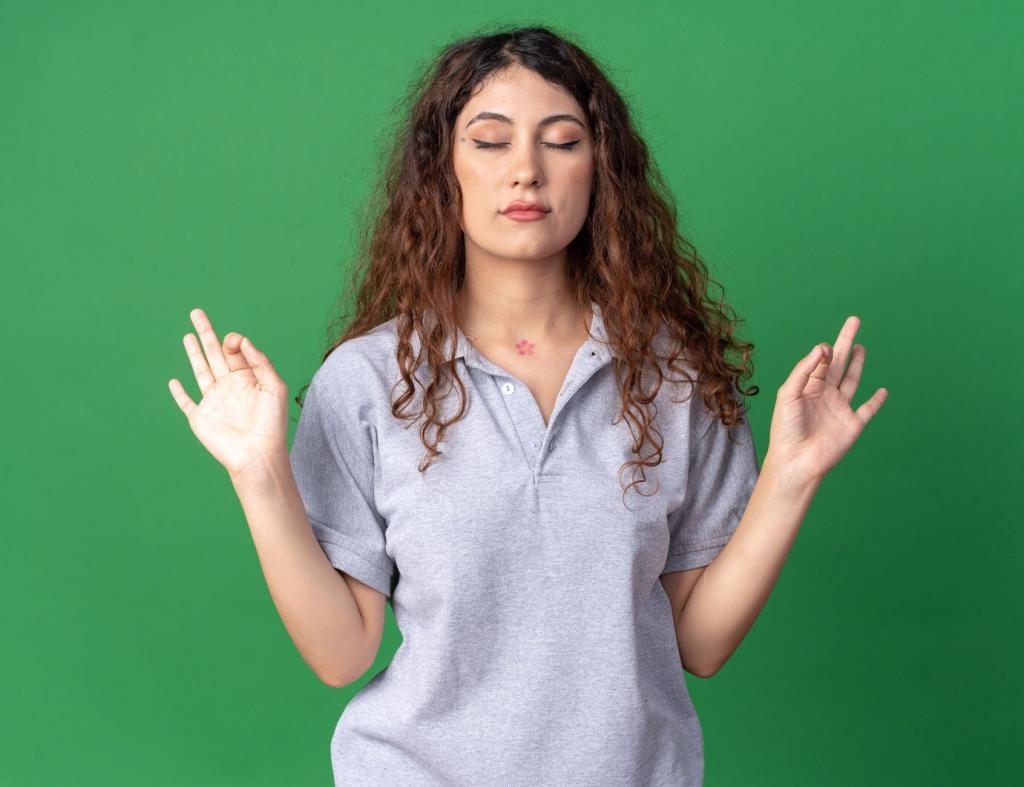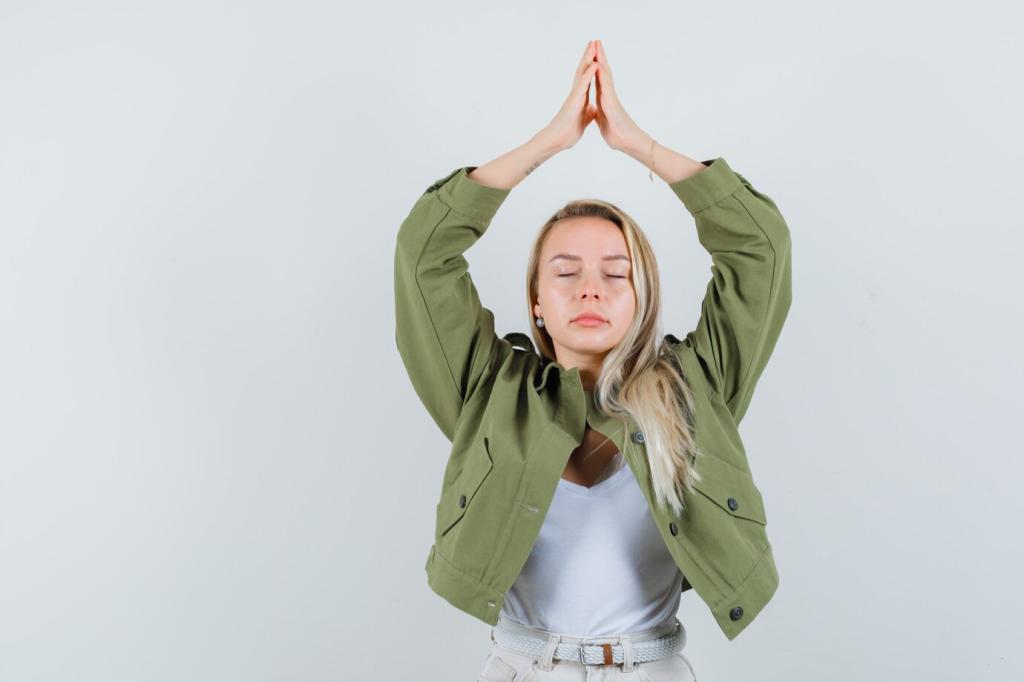Micro-Practices for Busy Days
Close your eyes or soften your gaze and picture a warm beam of light moving from crown to toes, releasing tension floor by floor. Pair the image with three slow exhales. By the lobby, let your shoulders drop and choose one supportive phrase to carry forward.
Micro-Practices for Busy Days
On public transit, imagine a calm bubble around your seat, filled with steady ocean air. Feel noise soften at the edges as your breath evens out. If you are driving, keep eyes open and simply layer gentle imagery over the horizon while maintaining full attention.





